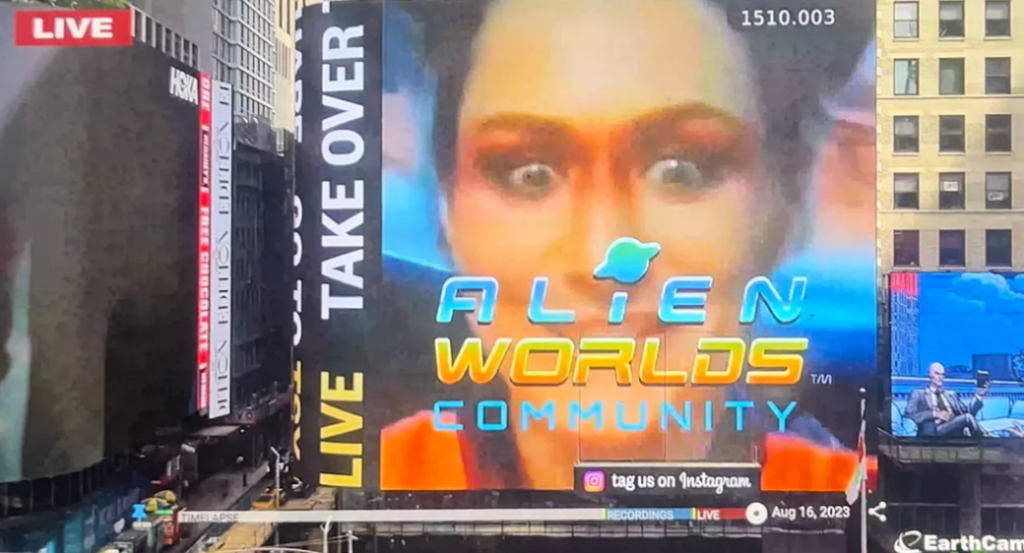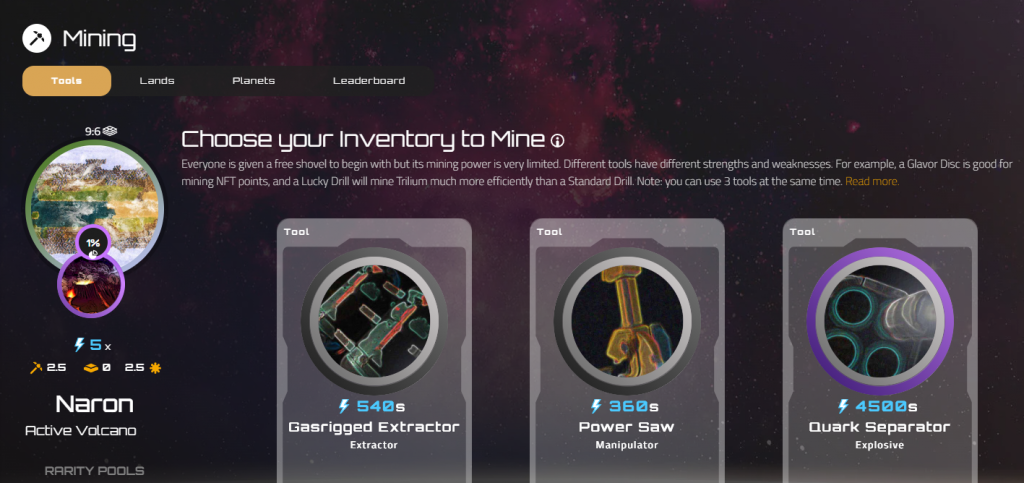Pondering the illimitable potential of self-governed blockchain worlds

Sarojini McKenna is CEO of Dacoco and a co-founder of popular onchain blockchain game Alien Worlds.
It has been little over a year since Ludens published a thought-provoking essay summarising his perspective on Autonomous Worlds, described as ‘Worlds with a Blockchain substrate.’
As outlined in the essay, Autonomous Worlds are ecosystems whose diegetic constituents (the narrative, characters and elements that constitute its existence) are determined by hard-coded introduction rules. ‘Worlds with a Blockchain substrate are almost maximally autonomous,’ he writes, since ‘anybody can enforce the introduction rule, without damaging its objectivity… Such Worlds can be nearly on par with systems like the English language, or physics itself.’
The concept of worlds has long captivated human beings. Both physical worlds represented by the vast universe and cosmos (and corporeal self of bone and blood and sinew) as well as the emotional and spiritual worlds represented by our joy and suffering, dreams, beliefs and so on.
Worlds can also be conceptual, existing within the realms of ‘books, games, social groups, and religions’ as the writer notes. What truly brings a world to life is not the sum of its physical artefacts but the collective engagement and belief of its inhabitants. ‘Printing a million copies of a book doesn’t create a World, unless people read it, care about it, and inhabit it.’
All of which is to say that Worlds are not passive constructs: they thrive when they become dynamic systems of entities and rules, with a current of passion pumping through their capillaries.
As a consequence of their hard diegetic boundaries (achieved through digital consensus) and formalised introduction rules, worlds built on blockchain – Autonomous Worlds – pave the way for a kind of democratic digital utopia, or at any rate worlds whose residents enjoy considerable authority while benefiting from the transparency and security provided by the public ledger.
Blockchain as the perfect substrate
Blockchains capably fulfil the role of substrate for worlds, bringing unprecedented data traceability and objectivity to the introduction rules and creating cast-iron diegetic boundaries.
The Bitcoin network is the perfect example of such a world, and its hard diegetic boundaries make BTC one of the best forms of hard currency currently in circulation (hard money is the kind whose supply is difficult to increase; easy money can conversely be printed ex nihilo).
While Bitcoin’s world is made up of addresses, balances and cryptographically-signed transactions, what if an Autonomous World could be spun up that is actually, well, world-like, with characters and stories and rivalries and politics and art and history and geography?
The blockchain’s unambiguous introduction rules would ensure that participants accept the entities introduced by it, since nothing could achieve legitimacy within the world without adhering to the criteria encoded in these same rules.
Wouldn’t such a world be worth exploring?
Autonomous Worlds and the autonomy spectrum
Not all Worlds are created equal when it comes to autonomy. Ludens notes that some rely on the edicts of a single individual – the world of Harry Potter, for instance, is controlled by JK Rowling. (In truth, the authorial reins are no longer held by two hands due to the film series’ success and spinoffs.)
The fact that there are differing standards determining how various worlds operate is no secret. Some worlds are tightly protected, others entirely open, while some gestate over a long time period. The world of Catholicism is a good example. While the Pope has no authority to change scripture, Pope Francis’s 2014 claim that it is possible to believe in evolution and creation is one that would certainly not have been made by his predecessors. Moreover, some modern Bible translations hew closely to the original text while others leverage modern language to translate the words from Hebrew, Greek and Aramaic and better convey meaning in the context of today. In other words, the diegetic boundaries of Catholicism are not as hard as they once were.
Ludens observes that there are many different substrates for worlds, as they can ‘run on everything from tribal songs to databases.’ Blockchain, he contends, is simply the best way of achieving self-governance as worlds built on-chain ‘enable inhabitants to participate in consensus. They run a network of computers reaching agreement on each introduction of a new diegetic entity.’
Interestingly, there is already a standout example of an Autonomous World in the wild, one that leverages blockchain to decentralise the very world-building process and thus enrich it: Alien Worlds.
Alien Worlds is a community-driven sci-fi metaverse whose players compete for a native token called Trilium (TLM). They also participate in governance matters through participation in six Planetary Syndicates, Decentralised Autonomous Organizations (DAOs) that control their own Trilium treasuries, generate stories, fund game development, host community events, sponsor tournaments, deploy new game features, organise meet-ups, pursue partnerships (with other devs and NFT ventures, for example) and much more.
Available on three blockchains – Ethereum, WAX and BNB Chain – this particular Autonomous World is characterised by digital ownership (cryptocurrency, NFTs), thriving culture (syndicates create distinctive cultures to attract players to their planet), and empowerment. As the world’s most played on-chain metaverse, Alien Worlds attracts over 400,000 unique monthly wallets and its players have racked up 370 million lifetime transactions. Its most solicited smart contract action, Trilium mining, gets called up to 13 million times every day.

There are many elements that set Alien Worlds apart, from its DAO-driven governance model to its real-world implications: proposals issued by syndicate members often break the boundaries of the metaverse, such as when Planet Kavian hosted the game’s first ever in-person meetup or when community members funded a billboard in one of the world’s (the real world, that is) most visited attractions, New York City’s Times Square.
Alien Worlds is also set to introduce a concept called tokenized lore, which will grant syndicates the power to manage canon and intellectual property rights within the game’s universe. The metaverse’s decentralised community can thus determine the introduction rules of their chosen syndicate, giving them the power to autonomously shape a fledgling franchise.
This innovative approach exemplifies the appeal of Autonomous Worlds, where the community actively moulds and controls the narrative and entities within the world. And where the disastrous ‘What if? scenarios outlined by Ludens (What if someone changed the introduction rule without telling the world inhabitants? What if the introduction rule was somehow bypassed?) do not, indeed cannot, apply thanks to the decentralised nature of blockchain.
Alien Worlds’ approach to tokenising storytelling and lore aims to increase the cultural total value locked (TVL) of its community, with players canonising the game’s mythology through fungible token and NFT voting. Syndicates are incentivised to bring long-term value to the ecosystem by promoting innovations, tools, resources and infrastructure that push the envelope in their Autonomous World.
How AI Can Feed Into Autonomous Worlds
It is natural to wonder how the evolution of Artificial Intelligence (AI) will affect Autonomous Worlds. Some will wonder whether AI-powered tools could compromise the autonomy of such Worlds, but I take a more positive view. There are a great many ways AI can, and indeed already is being utilised for the good.
In the case of Alien Worlds, AI-powered content generation can assist in creating narratives, storylines and lore, whether it’s ChatGTP being used to write plots or power an NPC or Midjourney helping produce art at scale to support the syndicates. Chatbots can be deployed to enforce community guidelines while AI algorithms could potentially be tailored to suggest relevant quests, items or interactions based on a gamer’s playing history. And then there’s AI-driven data analytics which can provide valuable insights into user behaviour and preferences and identify bot activity. The latter is particularly important as some users have sought to use bots to mine Trilium.

Rather than being in competition with one another, blockchain and AI can work synergistically to set the stage for richer worlds. Blockchain might actually be the perfect tool to govern the AI itself. With tokenized lore, DAOs could process and make judgments on the onslaught of content generated by AI, vetting the work and defending the intellectual property of the syndicate in a community-driven fashion. Better still, AI could actually be used by the DAOs to help in this vetting process.
Ultimately, incorporating AI into Autonomous Worlds is a no-brainer, enhancing UX and enabling worlds to evolve and adapt more rapidly to the needs and desires of their inhabitants.
Reality, But Not as We Know It
Autonomous Worlds represent a bold new frontier in the digital landscape, where the boundaries between reality and imagination blur. Immersive virtual playgrounds like Alien Worlds, built as they are on blockchain substrates, offer unparalleled autonomy and transparency for players, creators and community members, creating a new kind of gaming reality for the web3 age.
With a thriving community of empowered players, decentralised governance models and finite digital resources (Trilium, land, NFTs), not to mention a relentless commitment to open-source tooling and community development, the multi-chain metaverse serves as a testament to the potential of Autonomous Worlds.
In time, such worlds might come to redefine how we interact with each other online. They represent reality – but not as we know it. A world within a world where factions and organisations blossom into being and where curious players can co-own the franchise they have invested their time in.

Comments are closed.